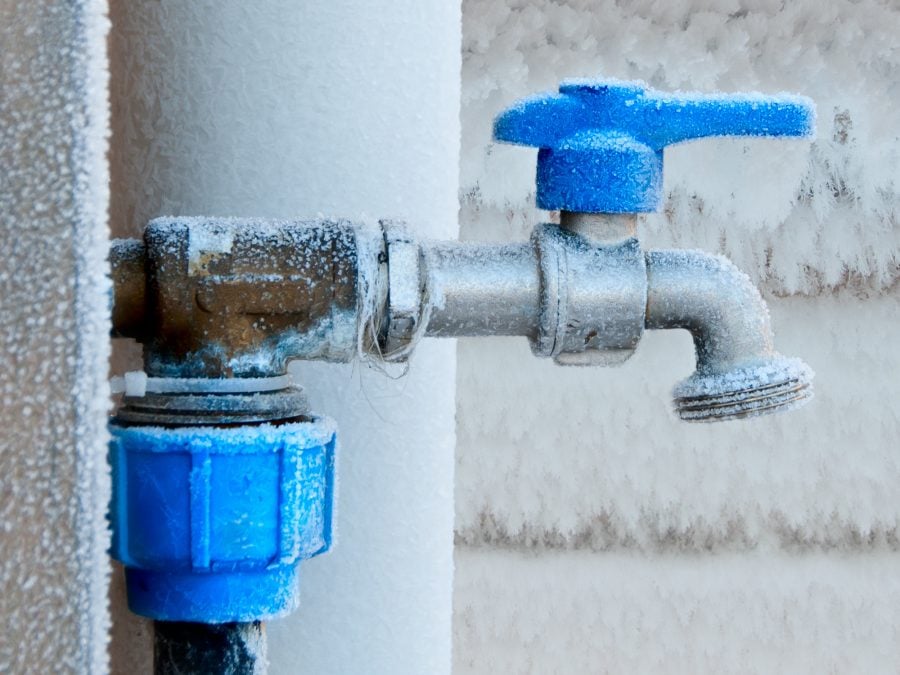Are you currently searching for answers about Prevent Frozen Pipes ?

Winter can damage your pipes, especially by freezing pipelines. Right here's how to prevent it from occurring and what to do if it does.
Introduction
As temperatures decline, the danger of frozen pipelines boosts, potentially causing pricey repair services and water damages. Understanding how to prevent frozen pipelines is important for homeowners in cool climates.
Avoidance Tips
Shielding prone pipelines
Wrap pipes in insulation sleeves or make use of warm tape to safeguard them from freezing temperature levels. Focus on pipes in unheated or external areas of the home.
Home heating techniques
Keep indoor rooms properly heated up, especially areas with plumbing. Open up cabinet doors to permit warm air to flow around pipes under sinks.
Just how to recognize icy pipes
Look for decreased water circulation from faucets, unusual odors or sounds from pipelines, and noticeable frost on revealed pipes.
Long-Term Solutions
Architectural adjustments
Take into consideration rerouting pipelines far from outside wall surfaces or unheated locations. Add additional insulation to attics, basements, and crawl spaces.
Upgrading insulation
Buy top quality insulation for pipelines, attic rooms, and walls. Proper insulation aids preserve consistent temperature levels and lowers the danger of frozen pipelines.
Safeguarding Outdoor Pipes
Garden tubes and outside taps
Detach and drain pipes garden tubes before winter months. Install frost-proof spigots or cover outdoor faucets with protected caps.
Recognizing Frozen Pipelines
What causes pipelines to ice up?
Pipelines ice up when subjected to temperature levels listed below 32 ° F (0 ° C) for extended durations. As water inside the pipelines freezes, it increases, taxing the pipe walls and possibly causing them to rupture.
Threats and problems
Frozen pipes can bring about supply of water disturbances, property damages, and expensive fixings. Burst pipes can flood homes and create comprehensive architectural damages.
Signs of Frozen Pipeline
Identifying frozen pipes early can stop them from bursting.
What to Do If Your Pipes Freeze
Immediate activities to take
If you presume frozen pipelines, keep faucets open up to eliminate pressure as the ice thaws. Utilize a hairdryer or towels taken in hot water to thaw pipelines slowly.
Conclusion
Stopping frozen pipelines requires positive measures and fast responses. By understanding the reasons, indicators, and preventive measures, home owners can protect their plumbing throughout winter.
5 Ways to Prevent Frozen Pipes
Drain Outdoor Faucets and Disconnect Hoses
First, close the shut-off valve that controls the flow of water in the pipe to your outdoor faucet. Then, head outside to disconnect and drain your hose and open the outdoor faucet to allow the water to completely drain out of the line. Turn off the faucet when done. Finally, head back to the shut-off valve and drain the remaining water inside the pipe into a bucket or container. Additionally, if you have a home irrigation system, you should consider hiring an expert to clear the system of water each year.
Insulate Pipes
One of the best and most cost-effective methods for preventing frozen water pipes is to wrap your pipes with insulation. This is especially important for areas in your home that aren’t exposed to heat, such as an attic. We suggest using foam sleeves, which can typically be found at your local hardware store.
Keep Heat Running at 65
Your pipes are located inside your walls, and the temperature there is much colder than the rest of the house. To prevent your pipes from freezing, The Insurance Information Institute suggests that you keep your home heated to at least 65 degrees, even when traveling. You may want to invest in smart devices that can keep an eye on the temperature in your home while you’re away.
Leave Water Dripping
Moving water — even a small trickle — can prevent ice from forming inside your pipes. When freezing temps are imminent, start a drip of water from all faucets that serve exposed pipes. Leaving a few faucets running will also help relieve pressure inside the pipes and help prevent a rupture if the water inside freezes.
Open Cupboard Doors
Warm your kitchen and bathroom pipes by opening cupboards and vanities. You should also leave your interior doors ajar to help warm air circulate evenly throughout your home.

We hope you enjoyed our post about How to Prevent Your Pipes From Freezing. Thanks a ton for taking time to read our post. Sharing is good. Helping others is fun. I praise you for being here. Kindly come visit our website back soon.
Call Today